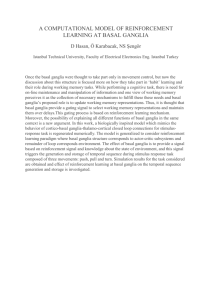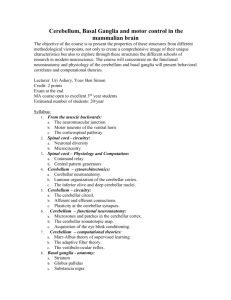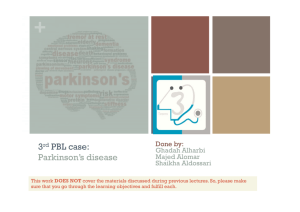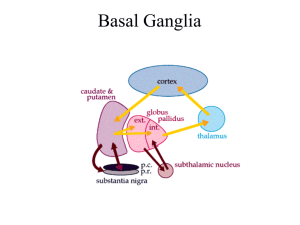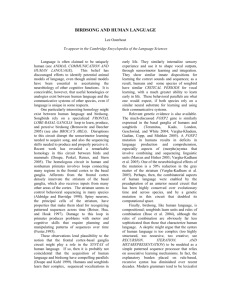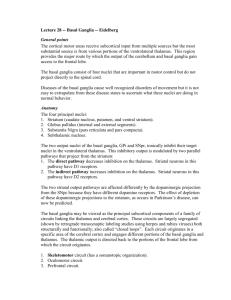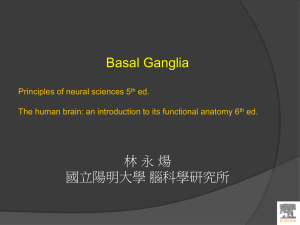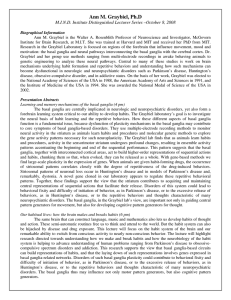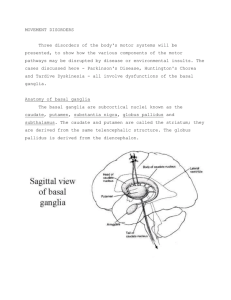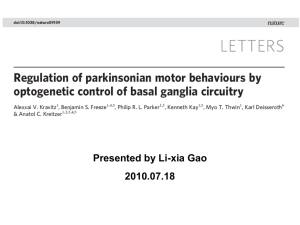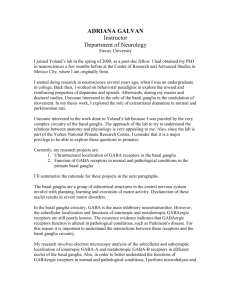The Role of the Basal Ganglia in Habit Formation
advertisement
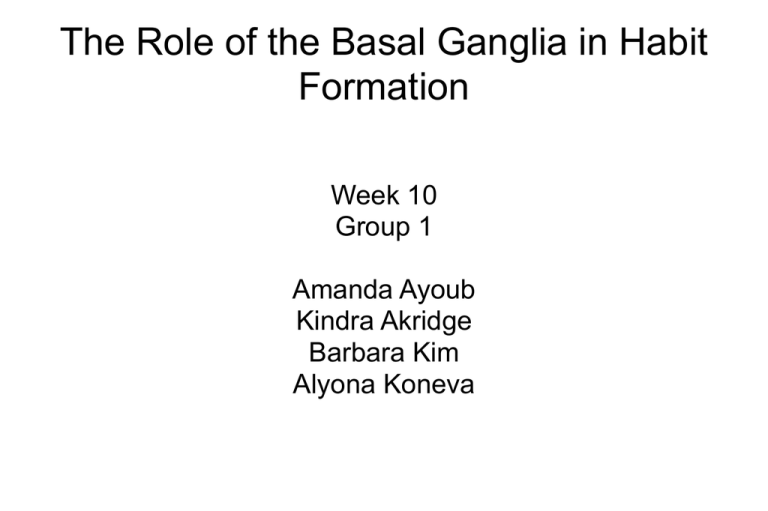
The Role of the Basal Ganglia in Habit Formation Week 10 Group 1 Amanda Ayoub Kindra Akridge Barbara Kim Alyona Koneva Explain the difference between a goal directed action and a habit, and provide a couple of your own examples of each • • • A goal directed behavior is when you are doing something for a result A habit is done without regard for the consequence but done as a reflex Nail biting, smoking, brushing teeth, etc 2.What is meant in the article by “levels of analysis” and how will it shape this article? • The Levels of Analysis are the different levels at which we examine the application of intentional actions. • These levels include: molecular, cellular, neuronal circuitry, brain structures, and behaviors. • This type of analysis specifically looks for the circuitry and structures that allows behavior to be intentional, purposeful, and to exude a specific outcome. • These levels also shape this article because they allow us to examine the neural basis of intentional action/habit formation, instead of interpreting all behavior through the viewpoint of a certain S-R (stimulus-response) 3. Show us the Basal Ganglia, and discuss neurotransmitters and their functions … 3. Show us the Basal Ganglia, and discuss neurotransmitters and their functions … The following diagrams show 2 coronal slices that have been superimposed to include the involved basal ganglia structures. Inhibitory GABAcontaining projection neurons Dopaminergic pathway leads to GABAergic (disinhibitory) direct pathway 3. Show us…The main components of the basal ganglia are the striatum, which consist of the caudate nucleus and the putamen, and the globus pallidus. • The largest component, the striatum, receives input from many brain areas but sends output only to other components of the basal ganglia. • The pallidum receives its most important input from the striatum (either directly or indirectly), and sends inhibitory output to a number of motor-related areas, including the part of the thalamus that projects to the motor-related areas of the cortex. Striatum Pallidum (inside) 4. Show us the kinds of cells in the Basal Ganglia and their behavior…. • (A) shows an aspiny neuron which belongs to the pallidum or the output nucleus. • (B) shows a spiny neuron spiny neurons are found in the striatum or the input nucleus. 5. …and connections of the Basal Ganglia with other brain regions… • The striatum is the major input nucleus of the BG and receives massive input from most of the cortex and the intralaminar areas of the thalamus • Output to both segments of the globuspallidus(GP) & the substantianigra pars reticulata(SNr) 6. It seems like the basal ganglia do two things, one involving steps using inhibition and (tonic) excitation to cause actions to happen, and one that inhibits actions. • • • outcome and antecedal The disinhibitory pathway is the most basic direct pathway The indirect pathway: inhibitory control. What is instrumental behavior? • Instrumental behavior occurs whenever an outcome is contingent on a response. Instrumental behaviors differs from reflexes and fixed action patterns, which are not controlled by the contingency between behavior and its consequences. • Lesions to the basal ganglia (particularly the striatum) disrupt “instrumentality” of actions. Animals that were tested could no longer perform or acquire actions in order to earn specific rewards or avoid aversive stimuli. What’s the point of running the maze anyways? 8. What impact did early theories about instrumental learning have on discovering the nature of basal ganglia function? • Previously, the dominant paradigm was S-R: all behavior was elicited by some antecedent stimuli from the external environment. Intentionality, expectancy and internal representation were considered “unscientific.” • This paradigm dismissed the obvious option that behavior can be goal directed. It limited the thinking about behavior for a long time. Basically, it prevented the questions from even being asked. • So, the dominant paradigm slowed the discovery of a model for intentional behavior by understanding the functions of the basal ganglia.
